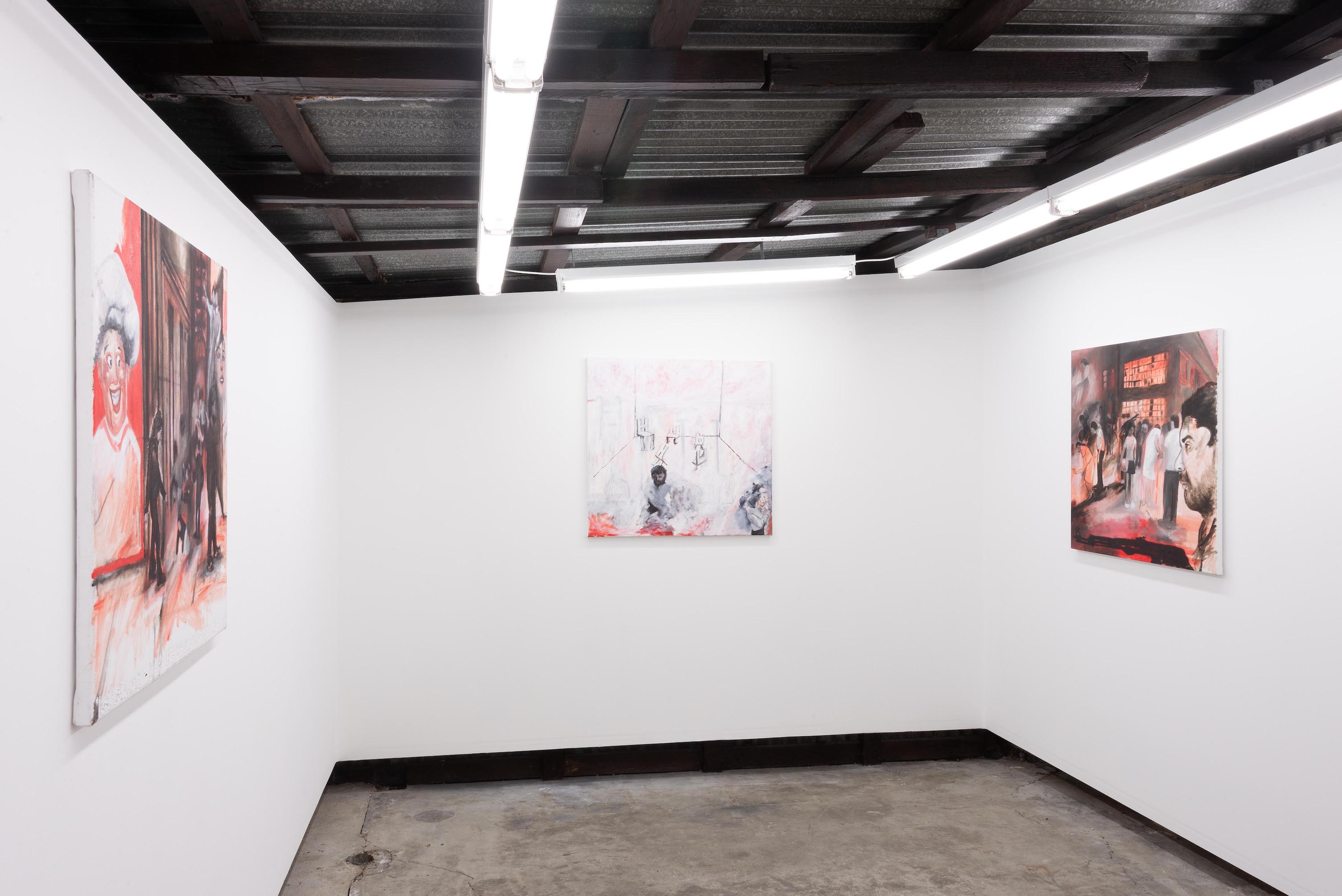


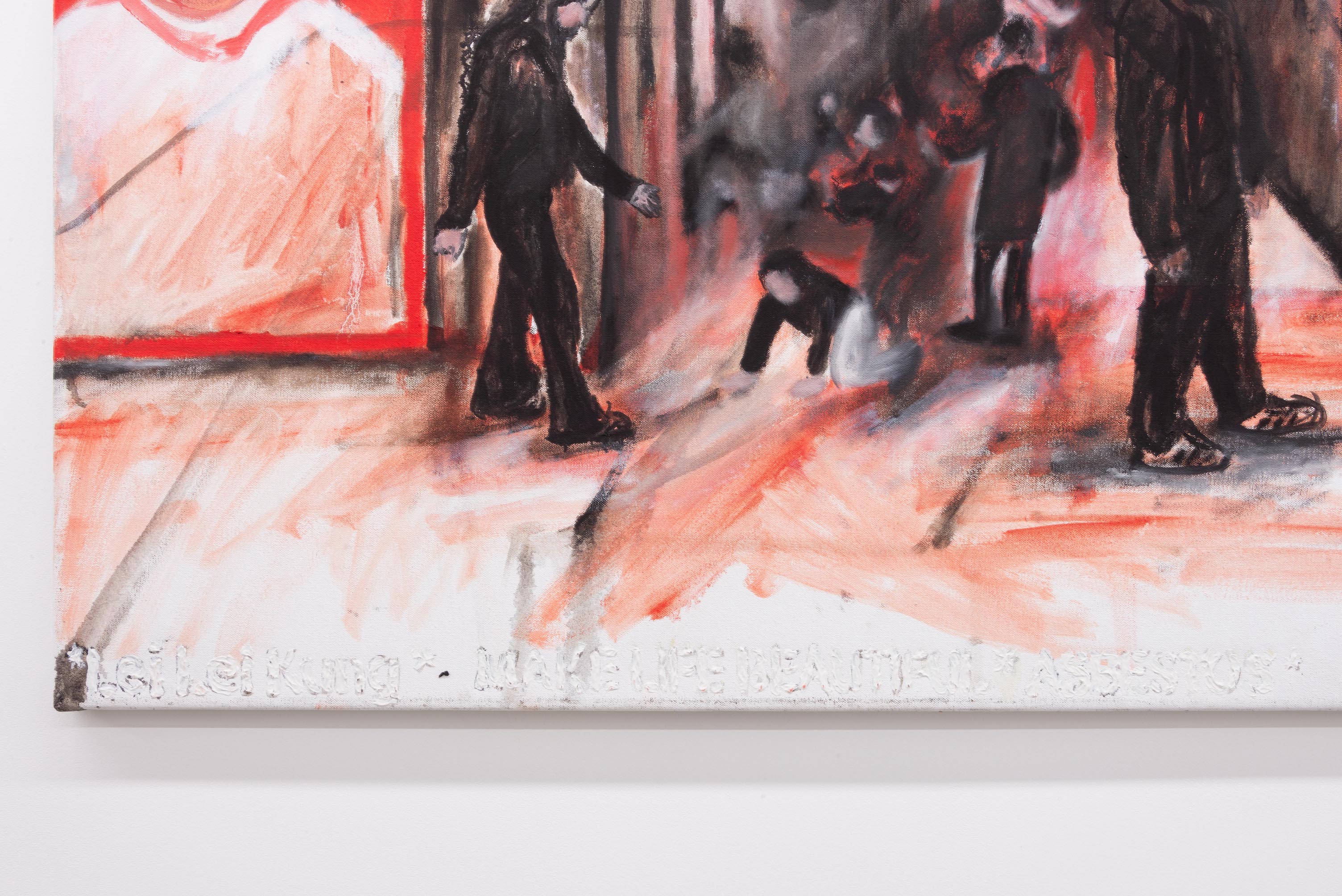
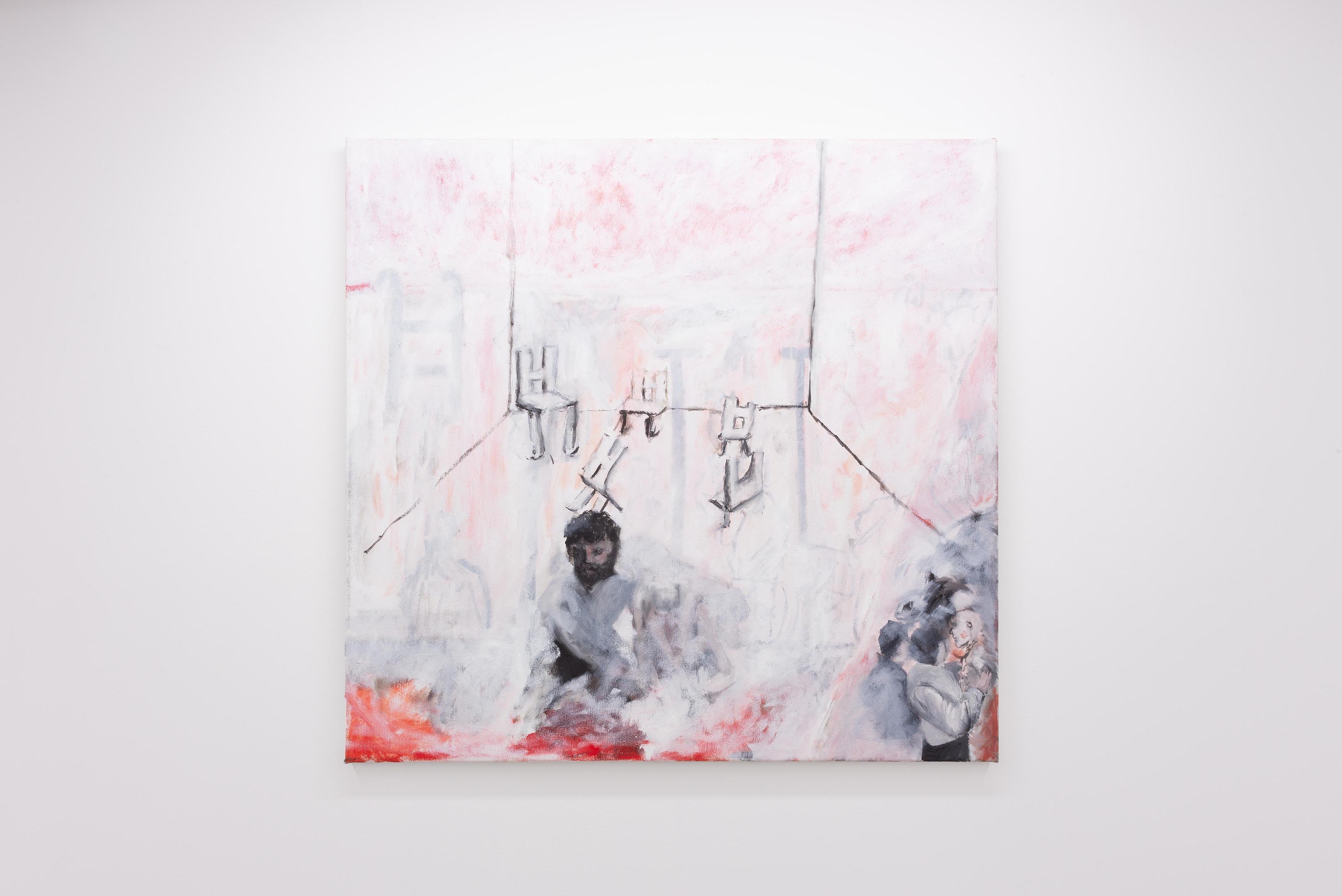
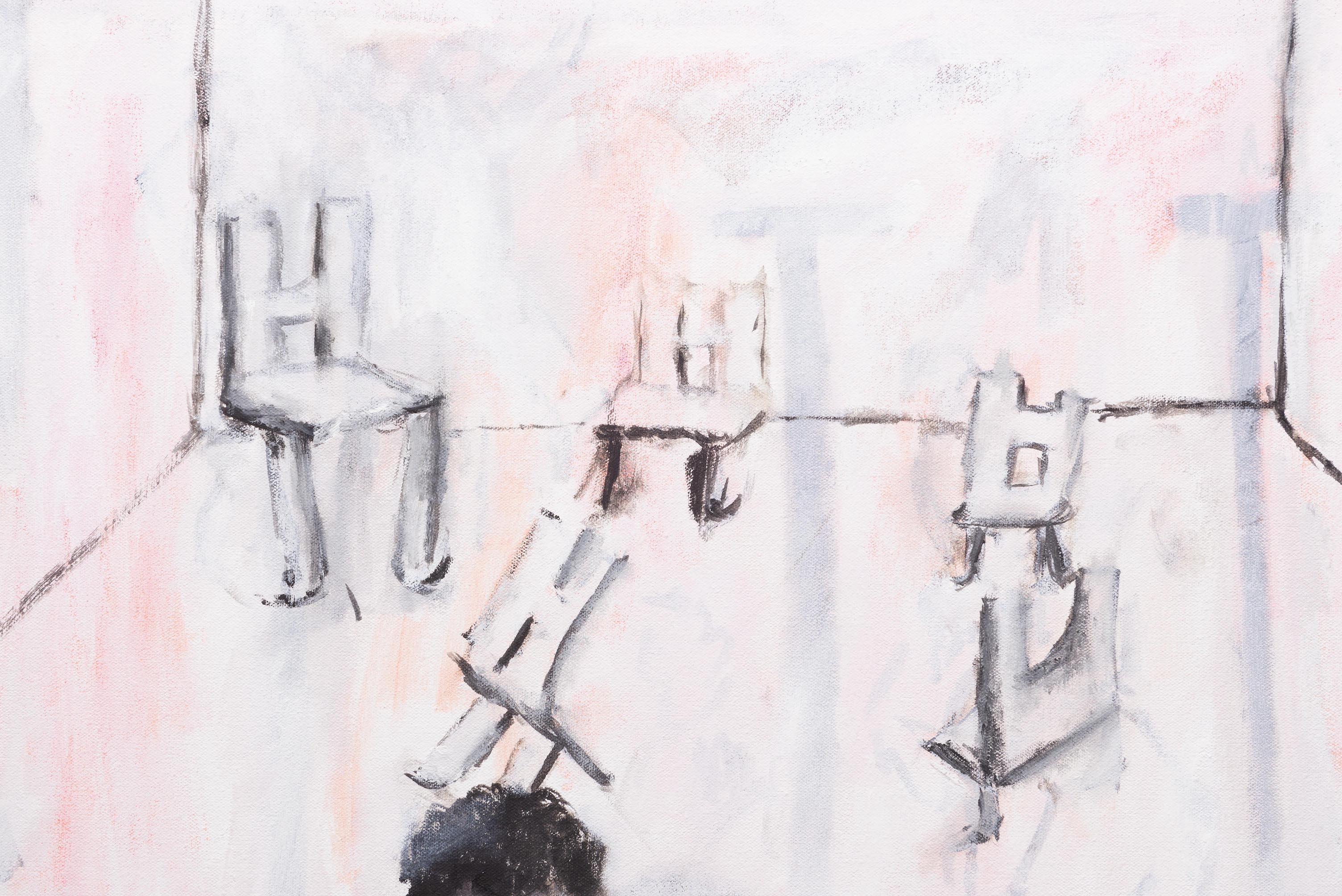

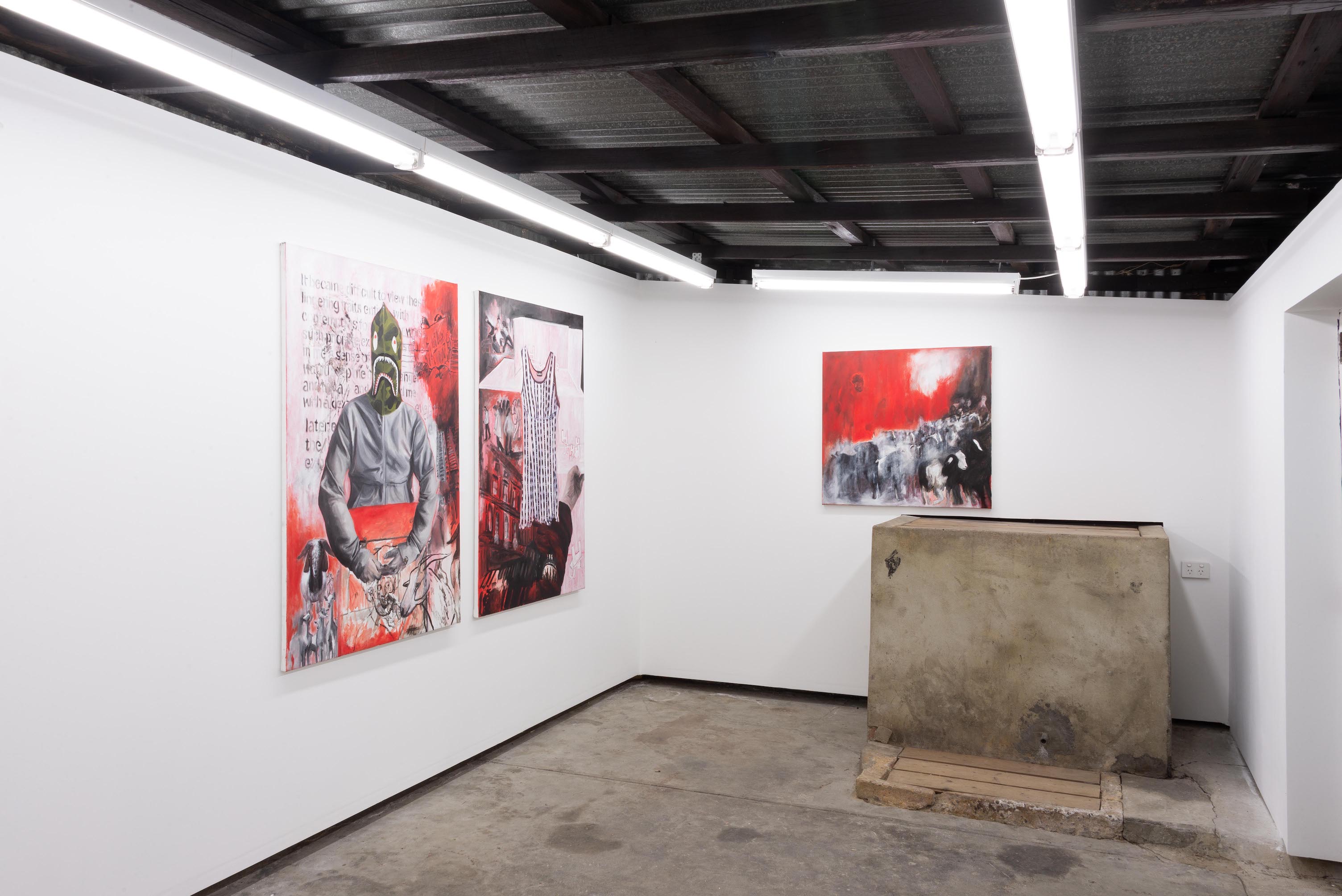
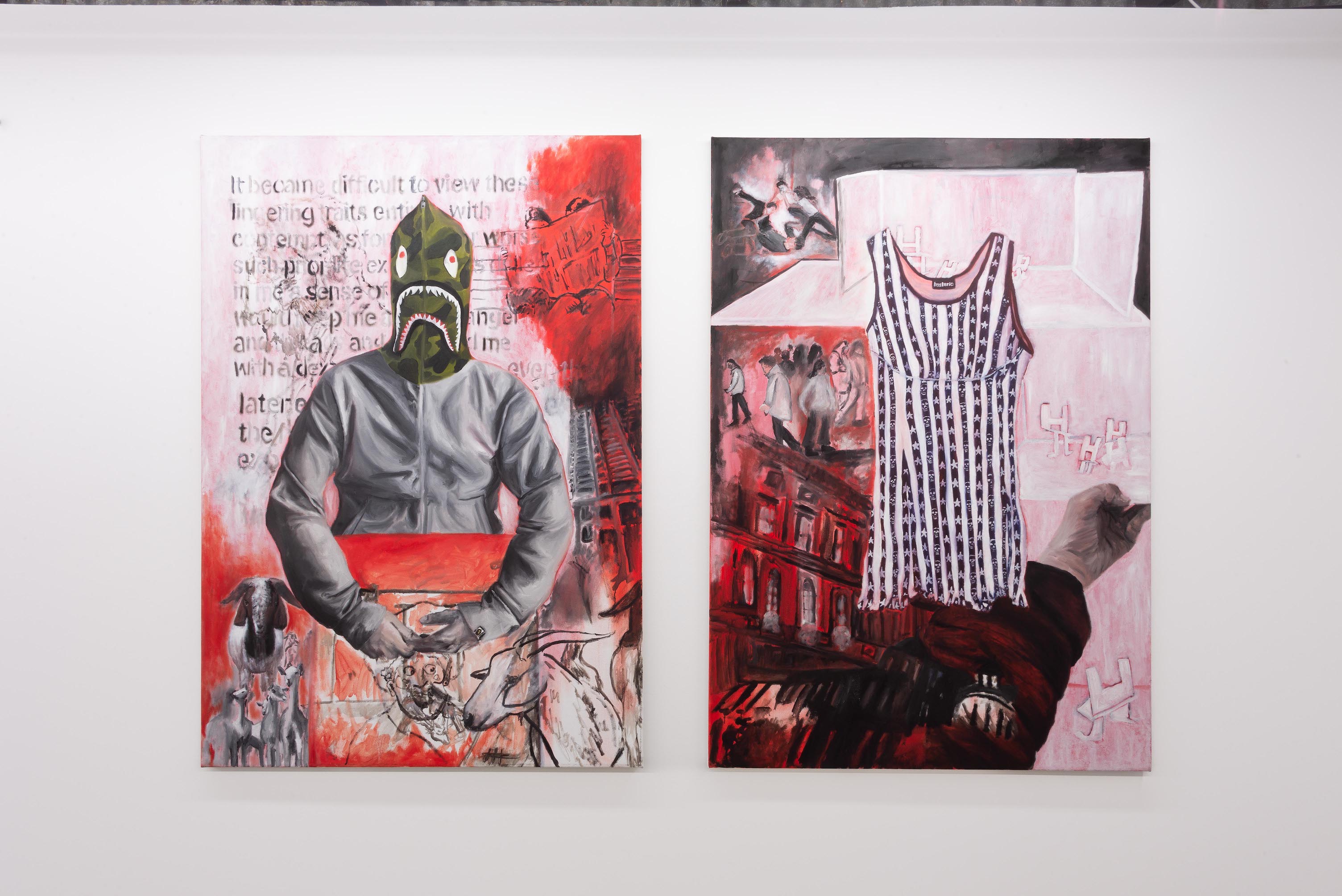


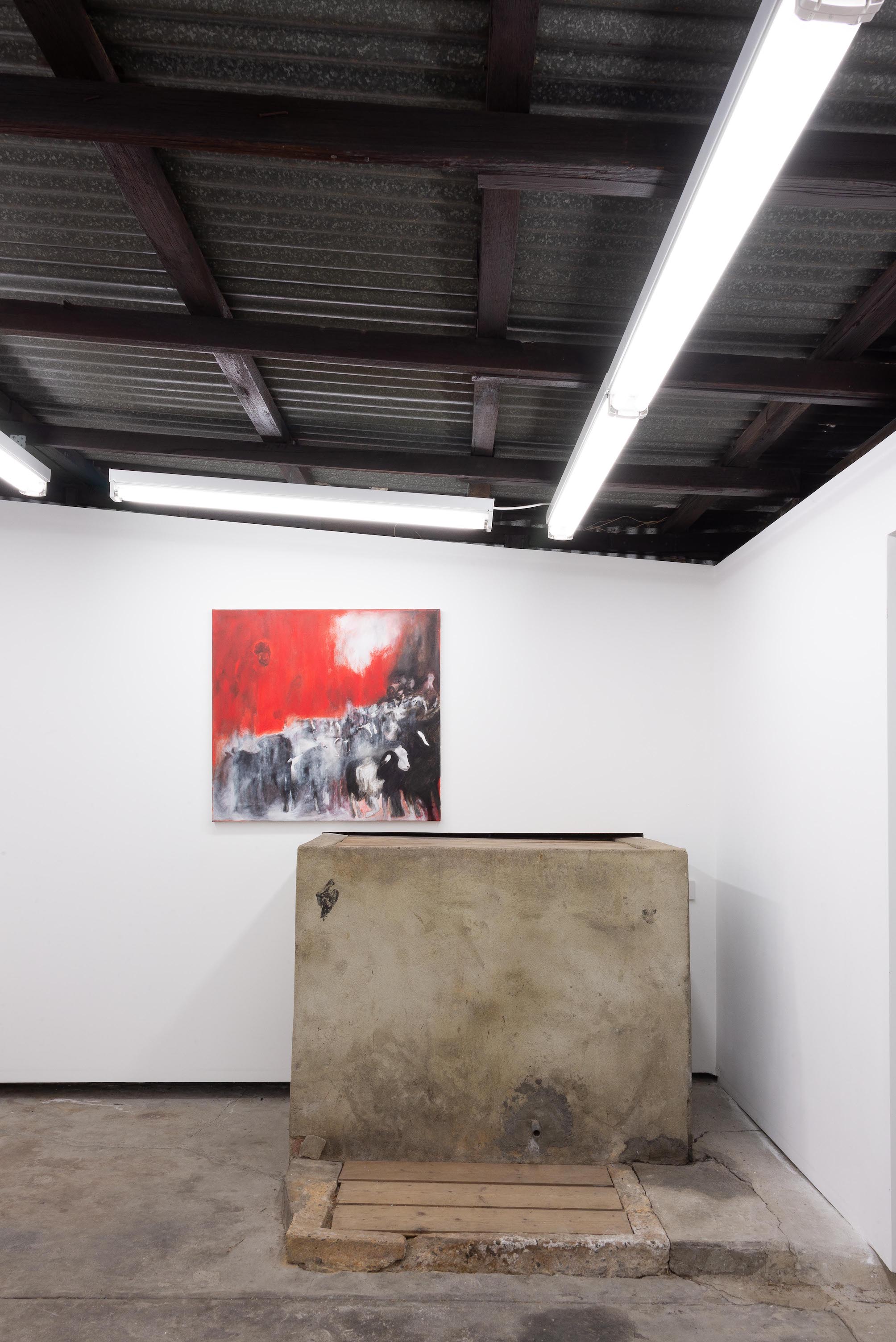
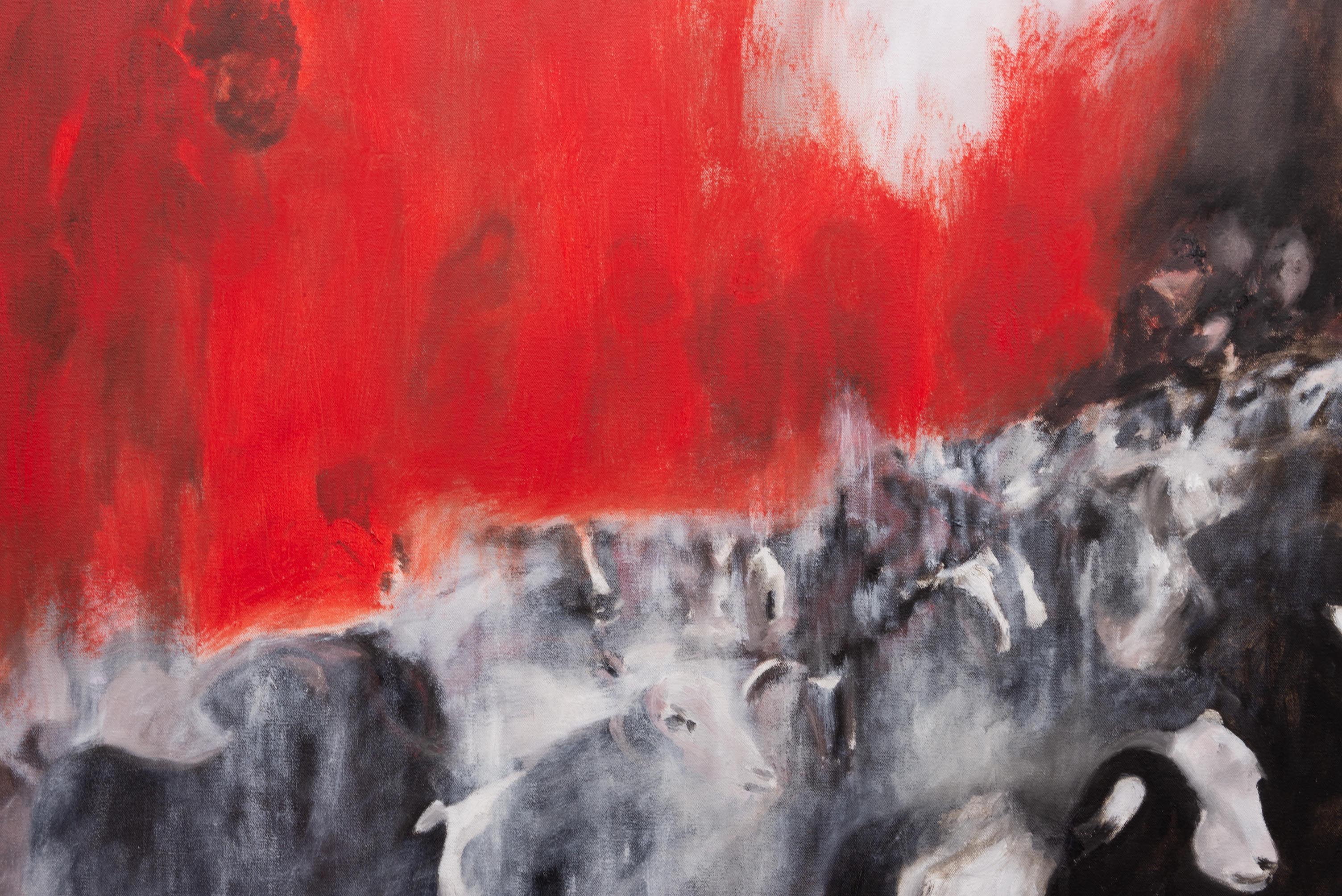
Lei Lei Kung, 'Make Life Beautiful'.
29 Oct - 15 Nov 2022
It’s the kind of surrealist image-dumping that can leave spectators in a state of interpretive delirium. Lei Lei stands for mayhem, never one to adhere to the rules of linearity or narrative stability. In this new series, the artist makes narrative a hostage of painting, summoning a radiant, humming spirit of paranoia.
Make Life Beautiful is the presentation of a life and its double. Each act is bustling with recurring figures, rooms, text and objects that jostle for position in a clash of perspectives. Black lines depicting sets and models seen in previous work are hidden under thin accretions of white paint. The result is a barrage of images and twisted visions of reality that culminate in a series of vignettes, saturated in a volcanic shade of red.
A couple is at the centre of this fragmented world. They are uniformed companions, vagabonds traversing a theatre of violence. Together they make passage through a cityscape, bearing witness to the slowly erupting geometry of its crises. A soldier, or perhaps a shepherd in some charred scene from the Old Testament, emerges from no-mans-land to sweep the landscape, herding us along with the flock through a nuclear fog.
Pictures like these can only be the result of a deliberately obsessional method of making. A method which scrutinizes one's identity, place, and relationships, collecting and restaging images from life and mind again and again. The focus of these obsessions emerges as a palace of self-mythology, decorated with emblems that seek to escape themselves. Checking all the doors, tracing the cracks. Looking for an exit.
